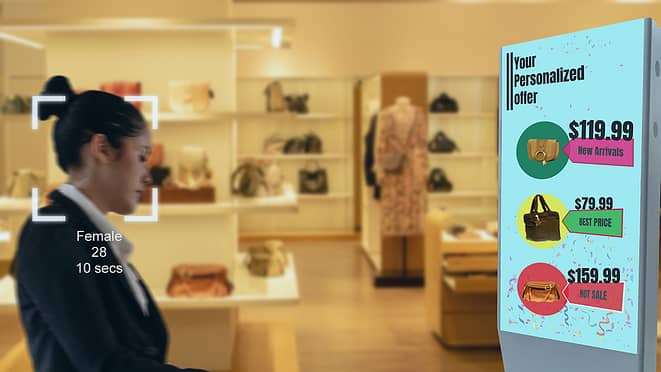Helping retailers maintain the safety of customers and employees
The COVID-19 pandemic has meant retailers, supermarkets, shopping malls and transportation among many others are adopting people counting systems to track and count visitors, according to a report by Markets and Markets. These end users are mainly adopting bidirectional people counting systems with thermal and video-based technologies, like those from Retail Sensing, which show the number of visitors at that moment, helping them to maintain the safety of customers and employees.
The virus has influenced the sales of people counting systems globally. Companies offering unidirectional people counting systems with Wi-Fi, Bluetooth, and pressure mat-based technologies have been affected the most due to COVID-19, as they are not capable of helping end users to maintain social distancing.
Ongoing technological advancements in the retail industry
The retail industry has adopted several technological advancements, including people counting, analytics, artificial intelligence, augmented reality and sensor data. Retailers have implemented people counting systems to get a better understanding of customers as well as for enhancing shopping experiences.

People counting systems can be integrated with retail analytics software to measure several key performance indicators (KPIs) in real-time such as conversion rate, visitor count, outside traffic, staff planning, dwell time, pedestrian foot traffic, walk-in rate, shopper to staff ratio, and customer path. Retailers use this information to take important decisions to sustain their business in the market. Moreover, in the retail industry, people counting systems offer various advantages such as high reliability, accuracy, and the ability to exclude carts, strollers, and children from the total count.
Challenge: lack of reliable results from Wi-Fi and Bluetooth based people counting system
There have been rapid advancements in people counting systems. However, Wi-Fi and Bluetooth-based people counting systems do not offer very reliable results when compared to other types of people counting systems, say Markets and Markets. Wi-Fi and Bluetooth-based systems use RSS measurement between the paired transmitter and the receiver antenna. Whenever a W-Fi or Bluetooth system installed in buildings detects an open Wi-Fi or Bluetooth source, it stores a token of the count. These systems are not reliable in comparison to other video-based or thermal-based people counting systems because they do not count people on entrances and offer very low direction detection.
Bidirectional people counting systems account for a larger share of people counting system market due to higher accuracy
Bidirectional people counting systems like those supplied by Retail Sensing accounted for a larger share of the people counting system market. The high demand for bidirectional people counting systems is attributed by their ability to provide higher accuracy than the unidirectional type. Also, they easily identify the direction and the count of visitors without any human intervention. Hence, they help retail stores, airports, and stadiums to take crowd and staff management decisions.
